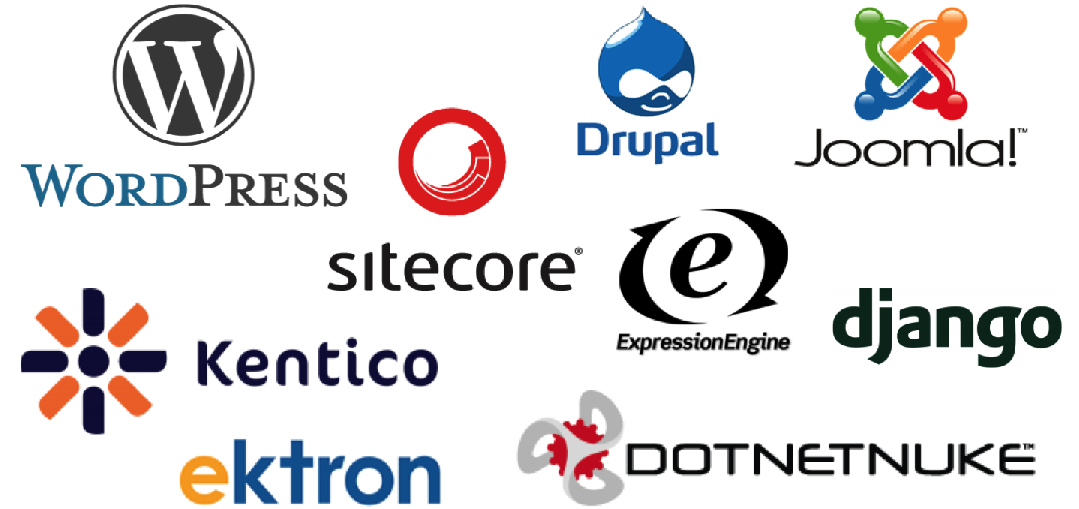 Despite the complicated term, the idea of a content management system is simple – it’s a web application that accommodates HTML content. By featuring HTML material on a website, owners can control the look and feel of the page in addition to creating or editing the basic functions of a website. There are countless content management systems out there – some more popular than others – but they all offer website creators a variety of tools and functions. In addition to a range of options, these managements systems are free to try out and create webpages, with the option of paying a nominal fee for domain names or other upgrades. Here are the top seven content managements systems currently available:
Despite the complicated term, the idea of a content management system is simple – it’s a web application that accommodates HTML content. By featuring HTML material on a website, owners can control the look and feel of the page in addition to creating or editing the basic functions of a website. There are countless content management systems out there – some more popular than others – but they all offer website creators a variety of tools and functions. In addition to a range of options, these managements systems are free to try out and create webpages, with the option of paying a nominal fee for domain names or other upgrades. Here are the top seven content managements systems currently available:
WordPress
– This is one of the most popular and easy to use content management systems. This publishing platform provides users with an extensive collection of free website templates and an ample assortment of customized templates for an additional charge. Bloggers and businesses alike use WordPress for its clean layout, easy widget applications and HTML functions – those just starting out might find this platform to be fairly valuable.
Joomla
– As an open source solution, Joomla is free and offers users thousands of custom designs and features. Easy to use and mobile friendly, Joomla allows users to upload a range of content including documents, videos, photos and text in a matter of minutes. Many established businesses around the world, including Ikea, Ebay and the United National Regional Information Centre all utilize the features and extensions provided through Joomla.
Drupal
– Similar to Joomla and WordPress, Drupal is another content management system that allows users to efficiently organize and customize content on a website. The extensive selection of modules and designs make it appealing to those with personal blogs or websites, in addition to major organizations and corporations.
SilverStripe CMS
– As an open source platform, SilverStripe simplifies the process of creating a website. Though not as popular as Joomla or Drupal, this content management system is fairly new and growing rapidly in number of members. Website developers have an assortment of widgets, themes and modules to create a professional or personal page.
Cushy CMS
– For those who aren’t really sure what they want and appreciate the ability to make unlimited changes or create a number of websites, Cushy CMS is idea. Simple editing tools are implemented into the management system that allows users to select or define aspects of the page to change without the need for any programming.
Frog CMS
 – Need a professional website? Creating one in Frog CMS is simple and provides users with a sleek design and range of templates. Frog CMS also features an essential assortment of file management tools – ideal for those who want to create a website for a business or organization.
– Need a professional website? Creating one in Frog CMS is simple and provides users with a sleek design and range of templates. Frog CMS also features an essential assortment of file management tools – ideal for those who want to create a website for a business or organization.
MODx
– Developers who want 100 percent control over the look and feel of a website will be pleased with the management system through MODx. Templates are easily customized through HTML and there aren’t any design restrictions to worry about – quick and simple!
These are just a few of the top recommendations for content management systems – some of which are popular and widely used, as well as those up-and-coming platforms that offer ease and custom designs to build pages in a matter of minutes. Depending on the needs for a page or desire of the developer, any number of these management systems can create the website needed for personal or professional use. Not sure which one will suit your needs the most? Since most of them are free to try, it’s always a good idea to play around with the different features and options of each of the content management systems to get a feel for which platform works best for your needs.